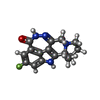Entry Database : PDB / ID : 7cmwTitle Complex structure of PARP1 catalytic domain with pamiparib Poly [ADP-ribose] polymerase 1 Keywords / / / / Function / homology Function Domain/homology Component
/ / / / / / / / / / / / / / / / / / / / / / / / / / / / / / / / / / / / / / / / / / / / / / / / / / / / / / / / / / / / / / / / / / / / / / / / / / / / / / / / / / / / / / / / / / / / / / / / / / / / / / / / / / / / / / / / / / / / / / / / / / / / / / / / / / / / / / / / / / / / / / / / / / / / Biological species Homo sapiens (human)Method / / / Resolution : 2.7 Å Authors Feng, Y.C. / Peng, H. / Hong, Y. / Liu, Y. Journal : J.Med.Chem. / Year : 2020Title : Discovery of Pamiparib (BGB-290), a Potent and Selective Poly (ADP-ribose) Polymerase (PARP) Inhibitor in Clinical Development.Authors: Wang, H. / Ren, B. / Liu, Y. / Jiang, B. / Guo, Y. / Wei, M. / Luo, L. / Kuang, X. / Qiu, M. / Lv, L. / Xu, H. / Qi, R. / Yan, H. / Xu, D. / Wang, Z. / Huo, C.X. / Zhu, Y. / Zhao, Y. / Wu, Y. ... Authors : Wang, H. / Ren, B. / Liu, Y. / Jiang, B. / Guo, Y. / Wei, M. / Luo, L. / Kuang, X. / Qiu, M. / Lv, L. / Xu, H. / Qi, R. / Yan, H. / Xu, D. / Wang, Z. / Huo, C.X. / Zhu, Y. / Zhao, Y. / Wu, Y. / Qin, Z. / Su, D. / Tang, T. / Wang, F. / Sun, X. / Feng, Y. / Peng, H. / Wang, X. / Gao, Y. / Liu, Y. / Gong, W. / Yu, F. / Liu, X. / Wang, L. / Zhou, C. History Deposition Jul 29, 2020 Deposition site / Processing site Revision 1.0 Dec 16, 2020 Provider / Type Revision 1.1 Jan 13, 2021 Group / Category / citation_authorItem _citation.journal_volume / _citation.page_first ... _citation.journal_volume / _citation.page_first / _citation.page_last / _citation_author.identifier_ORCID Revision 1.2 Nov 29, 2023 Group / Database references / Refinement descriptionCategory chem_comp_atom / chem_comp_bond ... chem_comp_atom / chem_comp_bond / database_2 / pdbx_initial_refinement_model Item / _database_2.pdbx_database_accession
Show all Show less
 Open data
Open data Basic information
Basic information Components
Components Keywords
Keywords Function and homology information
Function and homology information Homo sapiens (human)
Homo sapiens (human) X-RAY DIFFRACTION /
X-RAY DIFFRACTION /  SYNCHROTRON /
SYNCHROTRON /  MOLECULAR REPLACEMENT / Resolution: 2.7 Å
MOLECULAR REPLACEMENT / Resolution: 2.7 Å  Authors
Authors Citation
Citation Journal: J.Med.Chem. / Year: 2020
Journal: J.Med.Chem. / Year: 2020 Structure visualization
Structure visualization Molmil
Molmil Jmol/JSmol
Jmol/JSmol Downloads & links
Downloads & links Download
Download 7cmw.cif.gz
7cmw.cif.gz PDBx/mmCIF format
PDBx/mmCIF format pdb7cmw.ent.gz
pdb7cmw.ent.gz PDB format
PDB format 7cmw.json.gz
7cmw.json.gz PDBx/mmJSON format
PDBx/mmJSON format Other downloads
Other downloads 7cmw_validation.pdf.gz
7cmw_validation.pdf.gz wwPDB validaton report
wwPDB validaton report 7cmw_full_validation.pdf.gz
7cmw_full_validation.pdf.gz 7cmw_validation.xml.gz
7cmw_validation.xml.gz 7cmw_validation.cif.gz
7cmw_validation.cif.gz https://data.pdbj.org/pub/pdb/validation_reports/cm/7cmw
https://data.pdbj.org/pub/pdb/validation_reports/cm/7cmw ftp://data.pdbj.org/pub/pdb/validation_reports/cm/7cmw
ftp://data.pdbj.org/pub/pdb/validation_reports/cm/7cmw
 Links
Links Assembly
Assembly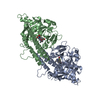
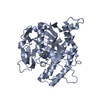
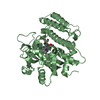
 Components
Components Homo sapiens (human) / Gene: PARP1, ADPRT, PPOL / Production host:
Homo sapiens (human) / Gene: PARP1, ADPRT, PPOL / Production host: 
 X-RAY DIFFRACTION / Number of used crystals: 1
X-RAY DIFFRACTION / Number of used crystals: 1  Sample preparation
Sample preparation SYNCHROTRON / Site:
SYNCHROTRON / Site:  SSRF
SSRF  / Beamline: BL17U1 / Wavelength: 1 Å
/ Beamline: BL17U1 / Wavelength: 1 Å Processing
Processing MOLECULAR REPLACEMENT
MOLECULAR REPLACEMENT Movie
Movie Controller
Controller




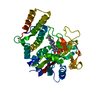
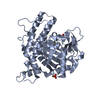
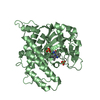

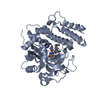
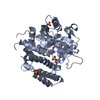
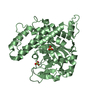
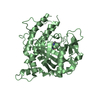
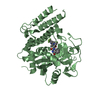
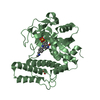
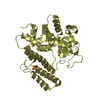
 PDBj
PDBj





